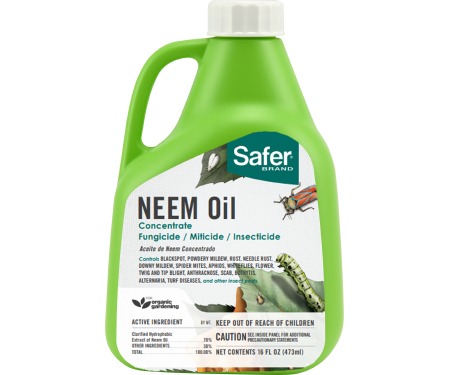
miticide.jpg
Miticide
Definition:
A miticide is a type of pesticide specifically formulated to control or eliminate populations of mites, which are microscopic arachnids that can damage crops, ornamental plants, and agricultural ecosystems.
Informational/Educational Words:
Mites, pest control, crop protection, modes of action, application methods, resistance management, environmental impact.
Fall off the barn roof and busted your keister? Life on the farm or ranch can be tough on the bum. Need a break? Laugh it off at FarmerCowboy.com, the #1 farm humor site. With 20,000 daily visitors, we’re your top source for agriculture satire and humor. Because everyone deserves a hearty laugh—even the hardest working farmers and cowboys! Join us and turn those long days into fun tales at FarmerCowboy.com.
Academic and Helpful Content:
Mites are tiny arthropods that belong to the class Arachnida and are closely related to spiders and ticks. While some mites are beneficial, others are considered pests and can cause significant damage to agricultural crops, ornamental plants, and natural ecosystems. Miticides play a crucial role in integrated pest management (IPM) programs, providing effective control measures to mitigate mite infestations and minimize economic losses. However, the responsible use of miticides requires careful consideration of factors such as mite species, application methods, environmental impact, and resistance management.
Importance of Miticides in Agriculture:
Mites can cause damage to crops by feeding on plant tissues, sucking sap, and transmitting plant pathogens. Additionally, certain mite species, such as spider mites and rust mites, can form large populations under favorable environmental conditions, leading to widespread infestations and crop losses. Miticides are essential tools in controlling mite populations and protecting crop yields, quality, and marketability.
Types of Miticides:
Miticides come in various formulations, including chemical compounds and biological agents, designed to target different mite species and life stages. Chemical miticides such as acaricides, organophosphates, and pyrethroids disrupt mite nervous systems or metabolic processes, leading to paralysis or death. Biological miticides, derived from naturally occurring microorganisms or plant extracts, offer alternative solutions with reduced environmental impact and minimal risk of resistance development.
Application Methods:
Farmers utilize various application methods to apply miticides effectively and ensure thorough coverage on plant surfaces. These methods include foliar sprays, soil drenches, trunk injections, and controlled-release formulations, depending on the target mite species, crop type, and infestation severity. Proper timing, dosage, and application techniques are critical factors in maximizing miticide efficacy while minimizing off-target effects and environmental risks.
Resistance Management:
Continuous use of miticides can lead to the development of resistance in mite populations, reducing the effectiveness of chemical control measures over time. To mitigate resistance, farmers must adopt integrated pest management strategies that incorporate rotation of miticides with different modes of action, use of biological controls, and cultural practices such as habitat manipulation and crop rotation. Monitoring for signs of resistance and implementing proactive measures are essential for preserving the efficacy of available miticides.
Environmental Impact:
The use of miticides can have unintended consequences on beneficial organisms, non-target species, and environmental ecosystems. Chemical miticides may persist in soil, water, and vegetation, potentially contaminating ecosystems and harming beneficial insects, birds, and aquatic organisms. Additionally, miticide residues may accumulate in food chains, posing risks to human health and wildlife populations. Implementing targeted application strategies and employing miticide-free alternatives can help minimize environmental risks associated with mite control.
Regulatory Oversight:
Government regulations govern the sale, distribution, and use of miticides to ensure their safe and responsible application in agriculture. Pesticide registration processes evaluate the efficacy, safety, and environmental impact of miticide products before they can be marketed and used by farmers. Regulatory agencies also establish maximum residue limits (MRLs) for miticide residues in food and feed commodities to protect human and animal health.
Future Directions:
Advancements in miticide research and development focus on improving the efficacy, safety, and environmental sustainability of mite control strategies. Innovations in miticide formulations, delivery systems, and target-specific active ingredients aim to optimize mite management while minimizing pesticide inputs and environmental impact. Integrated approaches that combine miticides with cultural practices, biological controls, and habitat management offer promising solutions for sustainable mite management in agriculture.
In conclusion, miticides are valuable tools in integrated pest management programs, helping farmers control mite populations and protect agricultural crops, ornamental plants, and natural ecosystems. However, their use must be guided by principles of responsible pesticide stewardship, including resistance management, environmental protection, and regulatory compliance. By adopting holistic mite management strategies and promoting sustainable agriculture practices, farmers can effectively manage mite infestations while minimizing risks to the environment and non-target organisms.
Originally posted 2007-03-13 20:19:11.
Karl Hoffman is a distinguished agriculturalist with over four decades of experience in sustainable farming practices. He holds a Ph.D. in Agronomy from Cornell University and has made significant contributions as a professor at Iowa State University. Hoffman’s groundbreaking research on integrated pest management and soil health has revolutionized modern agriculture. As a respected farm journalist, his column “Field Notes with Karl Hoffman” and his blog “The Modern Farmer” provide insightful, practical advice to a global audience. Hoffman’s work with the USDA and the United Nations FAO has enhanced food security worldwide. His awards include the USDA’s Distinguished Service Award and the World Food Prize, reflecting his profound impact on agriculture and sustainability.




